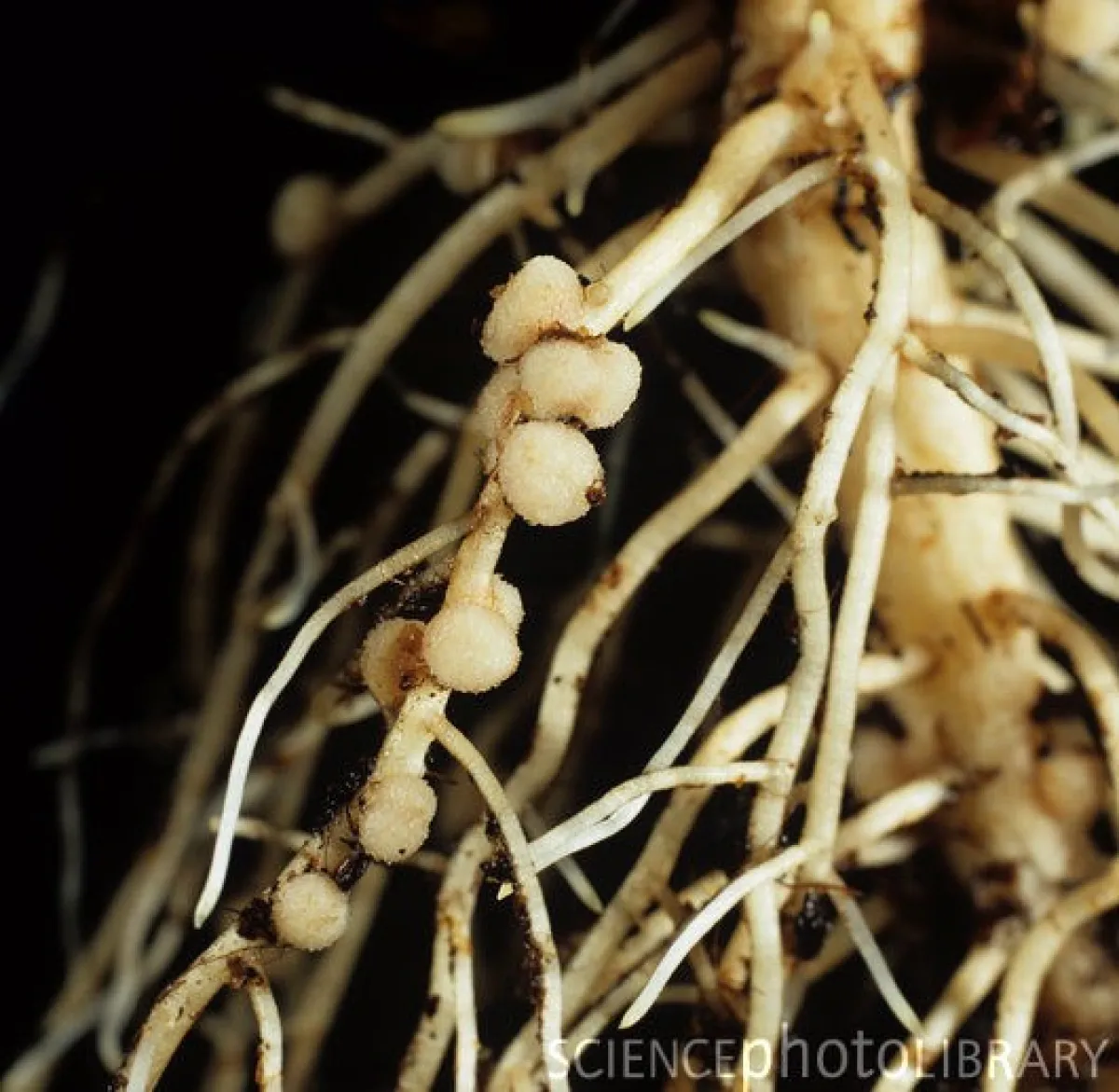Nodulation in legumes

Legumes are a large family of flowering plants that are economically important due to their wide variety of uses in agriculture, most notably as a staple food source.
Legumes are an interesting plant to study due to their symbiotic relationship with nitrogen fixing bacteria called Rhizobia. The Rhizobia are housed within specialised root structures called nodules and use glucose provided by the legume to split nitrogen and convert it into ammonia which can be used by the plant for the synthesis of organic molecules.
At ANU there have been many research projects over the years examining the relationship between legumes and Rhizobia in order to understand the development and evolution of nodule formation. In the 1980s Peter Gresshoff and his team discovered the genes that cause too many nodules to be formed in soybeans that can damage the plant. More recently Ulrike Mathesius and Michael Djordjevic and their research teams have examined the genes and processes involved in the recognition of legumes and Rhizobia.
The research at ANU has revealed the importance of plant flavonoids in the recognition of a specific legume species by Rhizobia. Research has also shown how Rhizobia have manipulated pre-existing systems in the legume in order to form nodules. The work of ANU researchers has been very important for our understanding of symbiosis, nodule formation and nitrogen fixation. Investigating nodulation in legumes is essential for understanding plant development, the evolution of symbiosis and the plants response to developmental change. Further study of nodulation and nitrogen fixation may lead to a reduction in the need for nitrogen based fertilisers, which would benefit farmers and the environment.
This article is one of a set featuring the achievements and memorable occasions in the History of Biology at ANU.
